Since Sony officially declared support for the PC, the ports of previous PlayStation exclusives were met with open arms: Days Gone, God of War, Marvel's Spider-Man: Miles Morales and Returnal. Not every port launched perfectly, but the overall quality was still above what the PS4 and PS5 could provide, making the PC versions seem like definitive versions with the right hardware. It also allowed these titles to be portable, whether on a laptop or on a device like the Steam Deck. That changed with The Last Of Us: Part 1, which was released in such a bad state that it took months for the game to finally be acceptable on the PC but greatly tarnished Sony's record on the platform. Ratchet & Clank: Rift Apart marks not only the first time that Insomniac's big franchise has made it out of the PlayStation platform family, but it also stands as a test to see whether Sony can return to making good ports again.
The game opens with a shot of a bustling metropolis filled with robots and one organic creature running away from the other robots chasing her down. She's soon rescued by a female Lombax named Rivetand, and just when it seems like Rivet will be caught by another set of robots, the scene transitions to the familiar duo of Ratchet and Clank as a parade in their honor is about to begin. Clank gives Ratchet a Dimensionator to help him find the rest of his kind, but the parade is interrupted by Dr. Nefarious. After a brief scuffle, the device is broken, sending Dr. Nefarious, Ratchet, and Clank to another dimension, where Nefarious' counterpart has successfully conquered the galaxy. The heroic duo is separated, so Clank teams up with Rivet and Ratchet is all on his own. This new set of heroes must free the dimension and find a way to go back home.
Stories in Ratchet & Clank games rarely get deep and complicated, and that doesn't change with this title. The move to an alternate dimension allows for changes with some of the series' well-known side characters, including some name changes. Captain Quark, for example, is now the pirate Captain Quantum, while former hoverboard champion Skidd is now a member of the resistance known as Phantom. The changes aren't startlingly huge, but it makes the alternate dimension feel more distinct.
More importantly, there was some effort made into making the playable characters from the alternate dimension just as deep and nuanced as the main duo. Both Rivet and Kit, a robot you find later, come with plenty of backstory and charm that make them feel like more than reskins of the main heroes. They're likable to the point that you wouldn't mind if they had their own spin-off game, since their sections are enjoyable and feature a mix of witty banter and heartfelt serious dialogue. It should also be noted that the story doesn't go too crazy with the prospect of dimension hopping, as you're only going between two of them instead of a multitude. While the variety would've been neat, it could also cause confusion if it becomes too much of a chore to keep track of.
The core gameplay mechanics remain relatively unchanged since the first title. This is an action platformer where you can run, jump, grind on rails, and melee enemies with a giant wrench or hammer. There are puzzles, but they're light in difficulty. The main appeal for the game is the guns, which range from the expected to strange, and some have alternate firing methods. For example, the regular blaster may do a single shot or a rapid-fire shot depending on how long you hold down the button. You'll find a gun that ricochets its shots before depleting one unit of ammo or a gun that brings out a tiny sentient mushroom that attracts enemies. There are guns that transform enemies into pixels and others that temporarily transform them into topiaries.
The whole arsenal is inventive and complements the game's tight platforming and shooting. The different planets visited sport sizable environments that feel different and give off different challenges for platforming and shooting, but don't expect the enemy types to get too diversified throughout the adventure. You'll be thrown into a few situations that break up the platforming and shooting. One involves the spider-bot Glitch that has you fighting off viruses in infected systems, but the arsenal is different enough that it doesn't feel like a repeat of the main game. Another sees Ratchet enter a dimensional zone and engage in some puzzle platforming by placing orbs in a certain order and activating switches to lead different versions of himself into a goal. None of these sections last too long, and there aren't too many, but you'll appreciate them.
There are two new gameplay mechanics that Rift Apart introduces. The first is the ability to throw a tether into some of the smaller dimensional rifts, allowing you to reach areas that aren't reachable with normal jumping techniques. The effect is cool to see as you pull yourself toward the rift, but it looks like you're pulling the world toward you instead. The second is the phantom dash. You'll use it to pass through energy gates doors, but you can also use it to gain some distance while performing a normal or double-jump. The dash can also be used defensively to evade shots, preventing you from attacking until you're at a normal state. The presence of those mechanics makes combat feel snappier. It doesn't quite place the combat in the same frantic level as a Devil May Cry game, but it allows for some increased mobility as you try to get the drop on enemies or get some breathing room before switching weapons or locating more health and ammo. They're great additions, and we'd like to see the dash move return in future games.
If you really had to find something to nitpick the game about, it would be that the game doesn't take the opportunity to make Ratchet and Rivet's gameplay mechanics different enough. Except for the fact that the former uses a giant wrench and the latter uses a giant hammer, both of them feature the same moves and use the same weapons. Even the gun levels, ammo and bolt counts are shared between them. While giving them some different weapons and moves would have made them feel more distinct, this approach also means that there's no need to grind when you're forced to switch characters. There isn't any shock when you go from a powered-up character to one that's not so leveled-up. Again, it's a real nitpick, as the gameplay flow feels like it tries to not place too many obstacles in the way of enjoying the ride and challenge.
The campaign hovers a little above the 15-hour mark, a good amount of time if you lament how campaigns have gotten shorter and shorter over time. Like most of the past games in the series, finishing it means that you have a Challenge mode, which is significantly more difficult when compared to most of the difficulty levels at the start of the story. If that isn't your thing, you'll be pleased to know that the game follows in the tradition of most platformers by having at least one side-quest on each planet to reward you with extra armor pieces and collectibles, like spy bots for backstory. On top of that, there are still plenty of regular bolts to collect to level up your weapons, crystals to beef up their power even more, gold bolts to unlock more stuff, and more side dimensional rifts. All in all, there's enough to extend that playtime for a few more hours.
Sony's ports of their PS4 and PS5 games have always included some extras specifically for the PC, and Rift Apart is no different. Ultrawide settings are present not just for 21:9 aspect ratios but also for 32:9 and even 48:9 if you to envelop yourself in three ultrawide monitors. Every form of upscaling technology is available, including Intel XeSS, both versions of AMD FSR, the second and third versions of Nvidia DLSS, and even Insomniac's internal upscaling solution. DualSense support is available if you choose to go wired, so you can get the same haptic feedback vibration and different trigger effects per weapon, just like on the PS5. What's interesting is that the haptic feedback vibration is also emulated on other controllers. We used an Xbox One controller (pre-Bluetooth) in wireless mode for this review and was able to get vibration for things like the bass of Club Nefarious to all of the footsteps on different surfaces. It's awesome to see this feature get ported over, and it would also be nice to see this occur on future games.
The PC port does suffer from crashes. The interesting tidbit is that the crashes seem to occur more often if your PC is of a lower tier as far as performance goes. For example, our PC with a Ryzen 7 7700 with 32GB of DDR5 RAM at 6000Mhz with a GeForce RTX 4090 experienced some frame rate drops to the low 40s when things got busy but never outright crashed, while the Steam Deck got a hard lock crash when speaking to Ms. Zurkon near a temporal portal. The recent patch has lessened some of the crashing on lower-spec machines, and the game saves so often that progress loss is rarely a thing, but it is something to watch out for.
Graphically, Rift Apart looks awesome. The characters have always looked excellent throughout the series, but they have been touched up quite a bit to make them stand out even more. Both of the lombaxes and morts, for example, have an extensive amount of fur shading done, so they look like they came straight out of a high-budget CG film. Clank and the other robots like Dr. Nefarious now sport some ray-traced reflections that add some realistic shine to them when they appear on camera. The environments also received touch-ups in the form of some added ray tracing for light and shadows as well as an abundance of moving characters and particle effects. Aside from the aforementioned drops in frame rate, the overall frame rate can go very high, with ray tracing at a native resolution if you have the hardware to do so, which outclasses the PS5 since you're either locked to 30fps at 4K with ray tracing on or dropping to 1440p if you want 60fps. The only downside comes from that same ray tracing, as some large outdoor environments can show off flickering shadows when you're facing tons of water and platforms.
The sound for Rift Apart is mostly superb. The soundtrack for the series has always been great, but it received more of a cinematic upgrade this time around, as it sounds like any big-budget film with the number of instruments being used and the wide variety in that soundscape. The effects carry the same type of punch as before, but the addition of a speaker on the DualSense controller is a nice bonus if you have that controller and don't mind using it in wired mode. The voice work is just as stellar as ever, with performances that are masterfully done, and there's the added benefit of having a great script. The only downside is that you're going to have a hard time picking out the incidental dialogue from the crowd because those lines are played at a lower volume. It isn't a unique issue to the PC build, though, as the PS5 version still exhibits this.
There have been some questions about how well the game would perform on the PC since the original release on the PS5 cited that the presence of the NVMe drive was one of the reasons why it couldn't work well on the PS4 original and Pro editions. As it stands now, using a high-speed NVMe drive using PCI-e 4.0 gets you performance that's on par with the PS5, as evidenced by the transition times in the opening moments. Using an NVMe drive with PCI-e 3.0 or one with lower transfer speeds will start to show some load transitions that only last one to two seconds longer than the PS5; it's an acceptable result that does not break the game's flow in these sections.
If you opt for a regular SATA-based SSD, you'll see longer load times that can result in Ratchet or Rivet floating in the space between portals for a few seconds longer before the transition is complete. It's acceptable and works as a fine compromise for those who don't have access to a NVMe drive (yet). The players that suffer will be the ones installing the game to a standard HDD, as even the fastest ones on the market produce very lengthy load screens and times that can mess up the cut scene timing or even fail to produce objects for a while. While other games have highlighted the benefits of a basic SSD, this is one of the few that makes the part feel essential in a modern PC.
Rift Apart received an official Verified status badge at launch, so that's a good sign for Steam Deck owners, and it turns out that the badge is well earned. With the game defaulting to the Medium preset, the game settles around 30fps. There are a few brief dips and a few times when the frame rate tries to go higher, but it never felt like the controls became unwieldy. You can try to do some tweaks to get something higher, but you might settle with a 40fps lock since it seems impossible to reach 60fps consistently. The game defaults to having gyro aiming activated once you rest your thumb on the right analog stick, and while it is a neat way to remind you that gyro aiming still exists on the device, you may want to shut it off if you're more of a traditionalist. As for battery life, you're looking at a little over two hours, which is normal for a major recent release on the device.
Two years after its release on the PS5, Ratchet & Clank: Rift Apart remains a solid title in a long-running franchise that hits the mark. The simple story is bolstered by both the existing characters and new ones that carry the same amount of depth. The action flows smoothly between different types, and the addition of a dash move gives the game a sense of speed that makes combat feel better. It looks absolutely gorgeous thanks to the increased horsepower of the PC, and while some annoyances do exist, the release is much more solid when compared to some of the other big PC titles in the last 12 months. Rift Apart is well worth buying, and the hope is that Sony takes this opportunity to put the older adventures on the platform as well.
Score: 8.5/10
More articles about Ratchet & Clank: Rift Apart


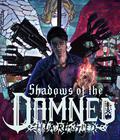
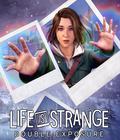
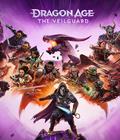
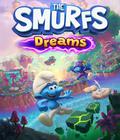
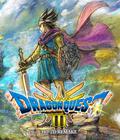



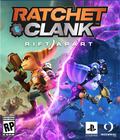 Ratchet & Clank: Rift Apart is a brand new intergalactic adventure where players will seamlessly travel through different dimensions in mid-gameplay.
Ratchet & Clank: Rift Apart is a brand new intergalactic adventure where players will seamlessly travel through different dimensions in mid-gameplay.



















